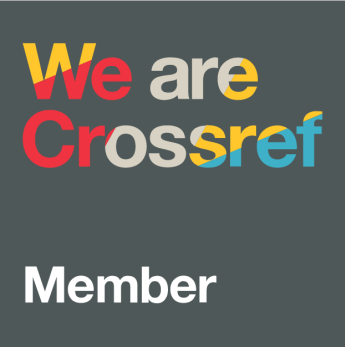The effectiveness of project-based learning to teach writing in relation to students' creativity
DOI:
https://doi.org/10.21831/lt.v7i2.14967Keywords:
factorial design, project-based learning, direct instruction, students' creativity, writing skillAbstract
This research was aimed to find out whether: (1) the use of project-based learning is more effective than direct instruction in the teaching of writing skills; (2) the students having high creativity have better writing skills than those having low creativity; (3) there is a correlation between teaching methods and creativity in teaching writing. This quasi-experimental research was conducted at SMP N 1 Yogyakarta in the academic year of 2016/ 2017. The sample was taken by using cluster random sampling. To collect the data, two instruments were employed. The data were analyzed by Multifactor Analysis of Variance ANOVA 2x2 and Tukey Test by IBM SPSS 22. The findings of this research can be stated as follow: (1) Project-Based Learning is more effective than direct instruction in teaching writing and it is indicated by the value of sig. (0.048); (2) the students who have high creativity have better writing achievement than the achievement of those who have low creativity and it is indicated by the value of sig. (0.000); (3) there is an interaction between teaching methods and students' creativity in teaching writing and it is indicated by the value of sig. (0.033). It means that the effect of methods and writing skills depends on the level of creativity of the students.
References
Arends, R. I. (2012). Learning to teach (9th Editio). The McGraw-Hill Companies, Inc.
Barron, B. J. S., Schwartz, D. L., Vye, N. J., Moore, A., Petrosino, A., Zech, L., & Bransford, J. D. (1998). Doing with understanding: lessons from research on problem- and project-based learning. Journal of the Learning Sciences, 7(3–4), 271–311. https://doi.org/10.1080/10508406.1998.9672056
BaÅŸ, G. (2011). Investigating the effects of project-based learning on students' academic achievement and attitudes towards English lesson. The Online Journal Of New Horizons In Education, 1(4), 1–52. http://www.tojned.net/journals/tojned/volumes/tojned-volume01-i04.pdf#page=8
Becker, W. C., & Carnine, D. W. (1980). Direct instruction. In Advances in Clinical Child Psychology (pp. 429–473). Springer US. https://doi.org/10.1007/978-1-4613-9805-9_11
Beckett, G. H., & Miller, P. C. (2006). Project-based second and foreign language education. Information Age Publishing.
Bender, W. N. (2012). Project-based learning: Differentiating instruction for the 21st century. Corwin Press.
Cohen, M., & Riel, M. (1989). The effect of distant audiences on students' writing. American Educational Research Journal, 26(2), 143–159. https://doi.org/10.3102/00028312026002143
Cole, D. G., Sugioka, H. L., & Yamagata-Lynch, L. C. (1999). Supportive classroom environments for creativity in higher education. The Journal of Creative Behavior, 33(4), 277–293. https://doi.org/10.1002/j.2162-6057.1999.tb01407.x
Dewey, J. (2017). My pedagogic creed. In Exploring Education (pp. 215–218). Routledge.
Fraenkel, J. R., Wallen, N. E., & Hyun, H. H. (2012). How to design and evaluate research in education. McGraw-Hill.
Fragoulis, I., & Tsiplakides, I. (2009). Project-based learning in the teaching of english as a foreign language in greek primary schools: From theory to practice. English Language Teaching, 2(3), 113–119.
Gomez, J. G. (2007). What do we know about creativity?. Journal of Effective Teaching, 7(1), 31–43.
Harmer, J. (2007). How to teach English (second edition). ELT Journal, 62(3), 313–316. https://doi.org/10.1093/elt/ccn029
Kim, K. H. (2006). Can we trust creativity tests? A review of the torrance tests of creative thinking (TTCT). Creativity Research Journal, 18(1), 3–14. https://doi.org/10.1207/s15326934crj1801_2
Larmer, J., Mergendoller, J., & Boss, S. (2015). Setting the standard for project based learning. ASCD.
Lian, A., Bodnarchuk, A., Lian, A., & Napiza, C. (2017). Academic writing as aesthetics applied: Creative use of technology to support multisensory learning. In Challenges in global learning: Dealing with education issues from an international perspective (pp. 350–374). Cambridge Scholars Publishing.
Manktelow, J. (2005). Mind tools. Mind Tools Ltd.
Puteh, S. N., Rahamat, R., & Karim, A. A. (2010). Writing in the second language: Support and help needed by the low achievers. Procedia - Social and Behavioral Sciences, 7, 580–587. https://doi.org/10.1016/j.sbspro.2010.10.078
Scardamalia, M., & Bereiter, C. (1991). Higher levels of agency for children in knowledge building: A challenge for the design of new knowledge media. Journal of the Learning Sciences, 1(1), 37–68. https://doi.org/10.1207/s15327809jls0101_3
Shulman, L. (2007). Why is project-based learning important? Edutopia. https://www.edutopia.org/project-based-learning-guide-importance
Simonton, D. K. (2004). Creativity in science: Chance, logic, genius, and zeitgeist. Cambridge University Press.
Taylor, G. (2009). A student's writing guide: How to plan and write successful essays. Cambridge University Press.
Thomas, J. W. (2000). A review of research on project-based learning. The Autodesk Foundation. https://tecfa.unige.ch/proj/eteach-net/Thomas_researchreview_PBL.pdf
Torrance, E. P., & Myers, R. E. (1970). Creative learning and teaching. HarperCollins Publishers.
van Weijen, D., van den Bergh, H., Rijlaarsdam, G., & Sanders, T. (2009). L1 use during L2 writing: An empirical study of a complex phenomenon. Journal of Second Language Writing, 18(4), 235–250. https://doi.org/10.1016/j.jslw.2009.06.003
Wijaya, T. T., Ying, Z., Purnama, A., & Hermita, N. (2020). Indonesian students' learning attitude towards online learning during the coronavirus pandemic. Psychology, Evaluation, and Technology in Educational Research, 3(1). https://doi.org/10.33292/petier.v3i1.56
Wilson, L. O. (2004). Characteristics of highly creative people. The Second Principle. https://thesecondprinciple.com/understanding-creativity/creativetraits/
Downloads
Published
How to Cite
Issue
Section
Citation Check
License
LingTera allows readers to read, download, copy, distribute, print, search, or link to its articles' full texts and allows readers to use them for any other lawful purpose. The journal allows the author(s) to hold the copyright without restrictions. Finally, the journal allows the author(s) to retain publishing rights without restrictions.
- Authors are allowed to archive their submitted articles in an open-access repository.
- Authors are allowed to archive the final published article in an open-access repository with an acknowledgment of its initial publication in this journal.

Psychology, Evaluation, and Technology in Educational Research is licensed under a Creative Commons Attribution-ShareAlike 4.0 International License.
Based on a work at https://petier.org/index.php/PETIER.









